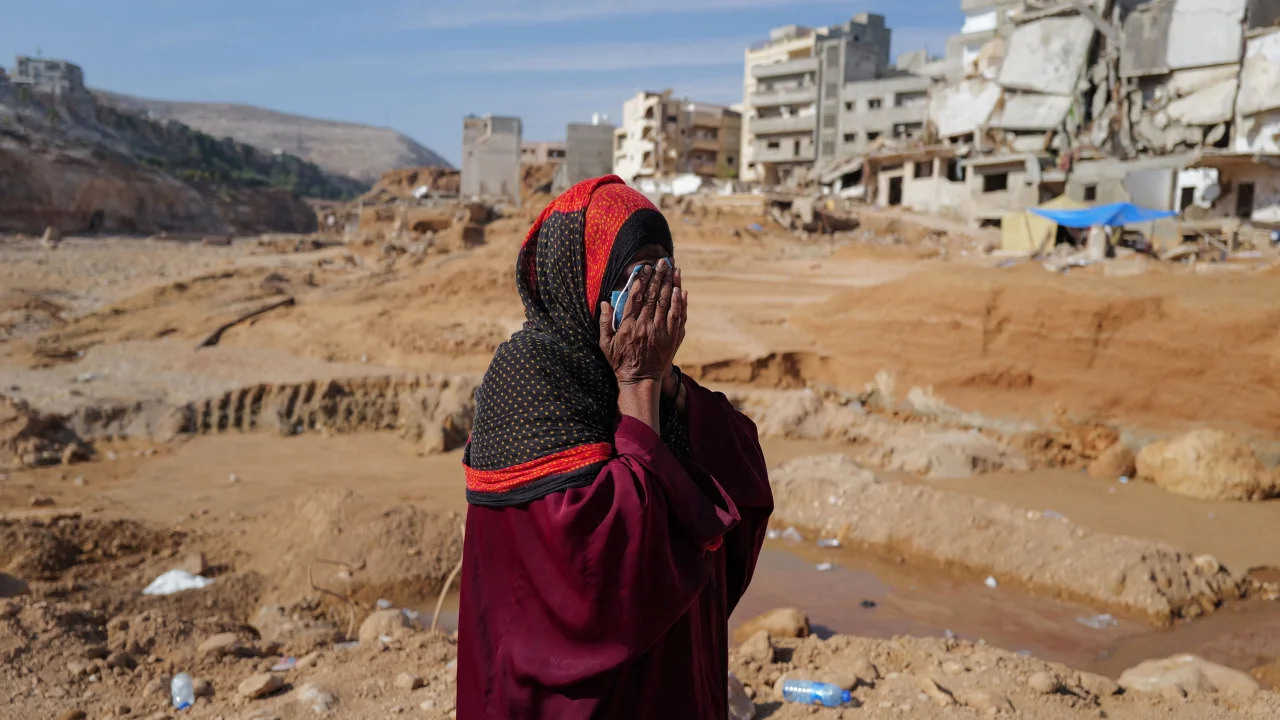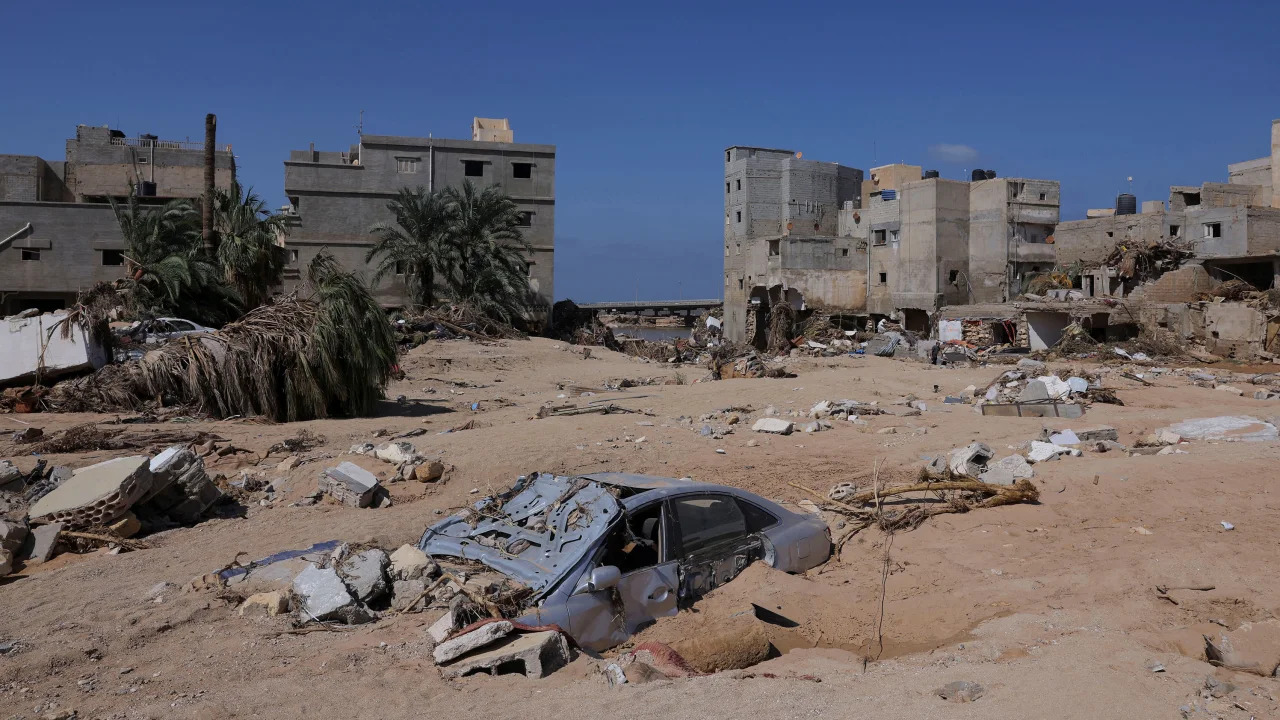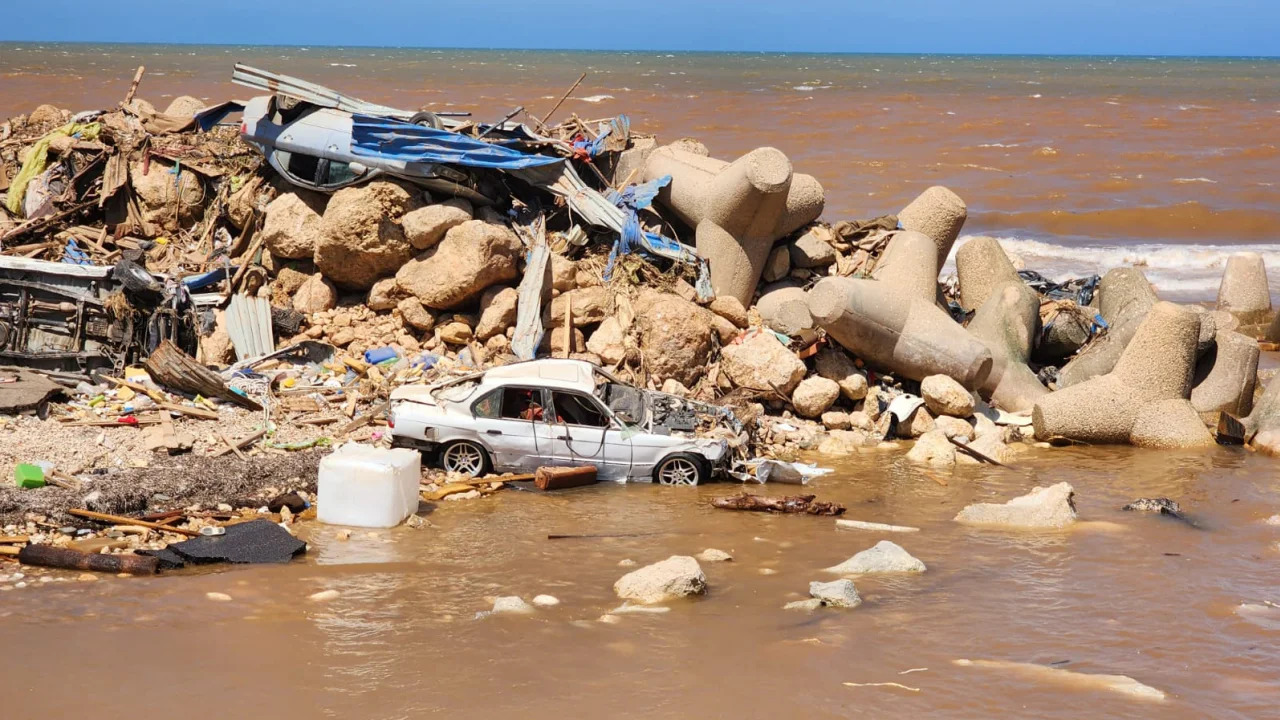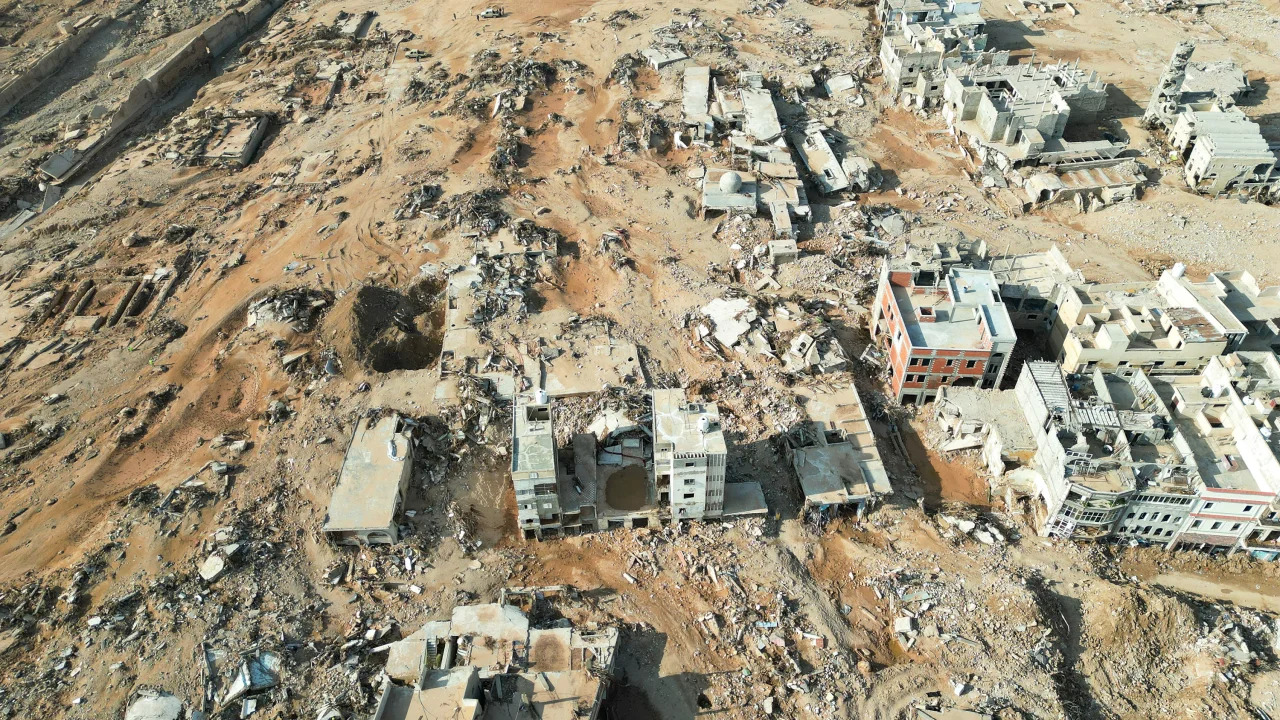International rescue teams in Libya are calling for more help to retrieve the bodies of victims killed in devastating floods that swept through the eastern city of Derna, killing thousands.
More than a week on, the teams said the majority of the victims’ bodies are in the water, with some corpses in areas that can only be reached using special equipment.
“Bodies are severely decomposing and at one point retrieving them might not be possible,” the representative of the Tunisian mission said in a meeting held with his counterparts from Arab countries, Russia, Turkey and Italy in Derna. “We need assistance, so our intervention is more efficient,” he added.
Mission representatives from the UAE, Egypt and Algeria described finding bodies in bays and coves in the Mediterranean in areas only accessible by special boats.
The Algerian representative said his team spotted around 50 bodies from a cliff around 7 nautical miles from the Derna port, but the area is only accessible by divers and boats.
“If we get the right boats we can retrieve 100 bodies every day,” the Egyptian representative said.


Catastrophic flood swept entire neighborhoods into the Mediterranean last Sunday.
The toll from the devastating floods in Derna remains unclear. According to a UN report released Saturday, the figure has risen to at least 11,300, while a further 10,100 remain missing.
But Libyan authorities on Sunday disputed this figure, with the health ministry of Libya’s eastern government reporting that it had documented 3,252 deaths in Derna so far and that the UN toll was inaccurate. The health ministry figures document the bodies that are retrieved and buried.
The UN said it was citing the Libyan Red Crescent. CNN has approached both organizations for comment and is unable to verify the two conflicting figures.
More than 40,000 people have been displaced across northeastern Libya since the extreme rainfall brought by Storm Daniel, the UN says.
Experts say the storm’s impact was greatly exacerbated by a lethal confluence of factors including aging, crumbling infrastructure, inadequate warnings and the effects of the accelerating climate crisis.
Derna, the epicenter of the disaster, was split into two after flood waters swept entire neighborhoods, ploughing a path to the sea. It had a population of around 100,000 before the tragedy.
Its waterfront has become the main staging area for delivering dead bodies and transporting them for burial, in a process that has been kept to one location due to the health hazards of decomposing bodies.


On Saturday, a CNN team at the scene saw at least four bodies, or their remains, arriving and being loaded into a truck.
Two volunteers from Derna at the scene said that 22 bodies had arrived for burial on Saturday. They said up to 90 bodies were delivered on Friday.
The dead bodies, they explained, are no longer identifiable on the seventh day after the flooding, because they all “look the same,” one volunteer told CNN.
Asma Awad, another volunteer, told Jomana she lost a number of relatives, including her husband’s entire family. Derna “was the most beautiful city,” Awad said, adding she used to call it “the mermaid.”
Awad questioned whether Derna will “rise up again,” before bursting into tears.